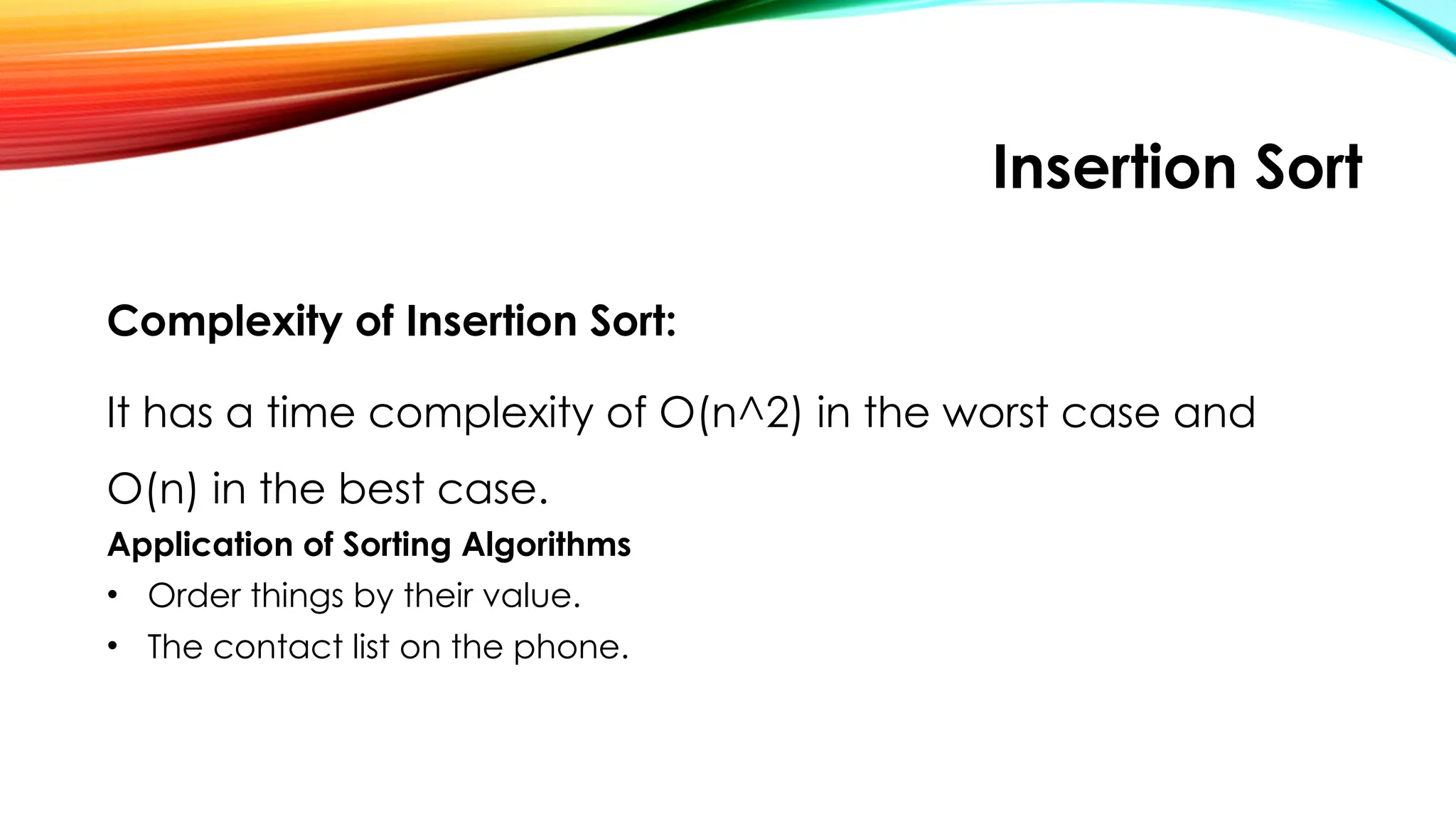Small and Medium Enterprises (SMEs): Offering micro and small enterprise loans to support entrepreneurship and job creation.
Large Corporations: Including partnerships with entities like Lemi National Cement PLC, indicating a focus on supporting larger economic projects.
Agricultural Sector: Providing loans for energy supply technologies and agricultural inputs
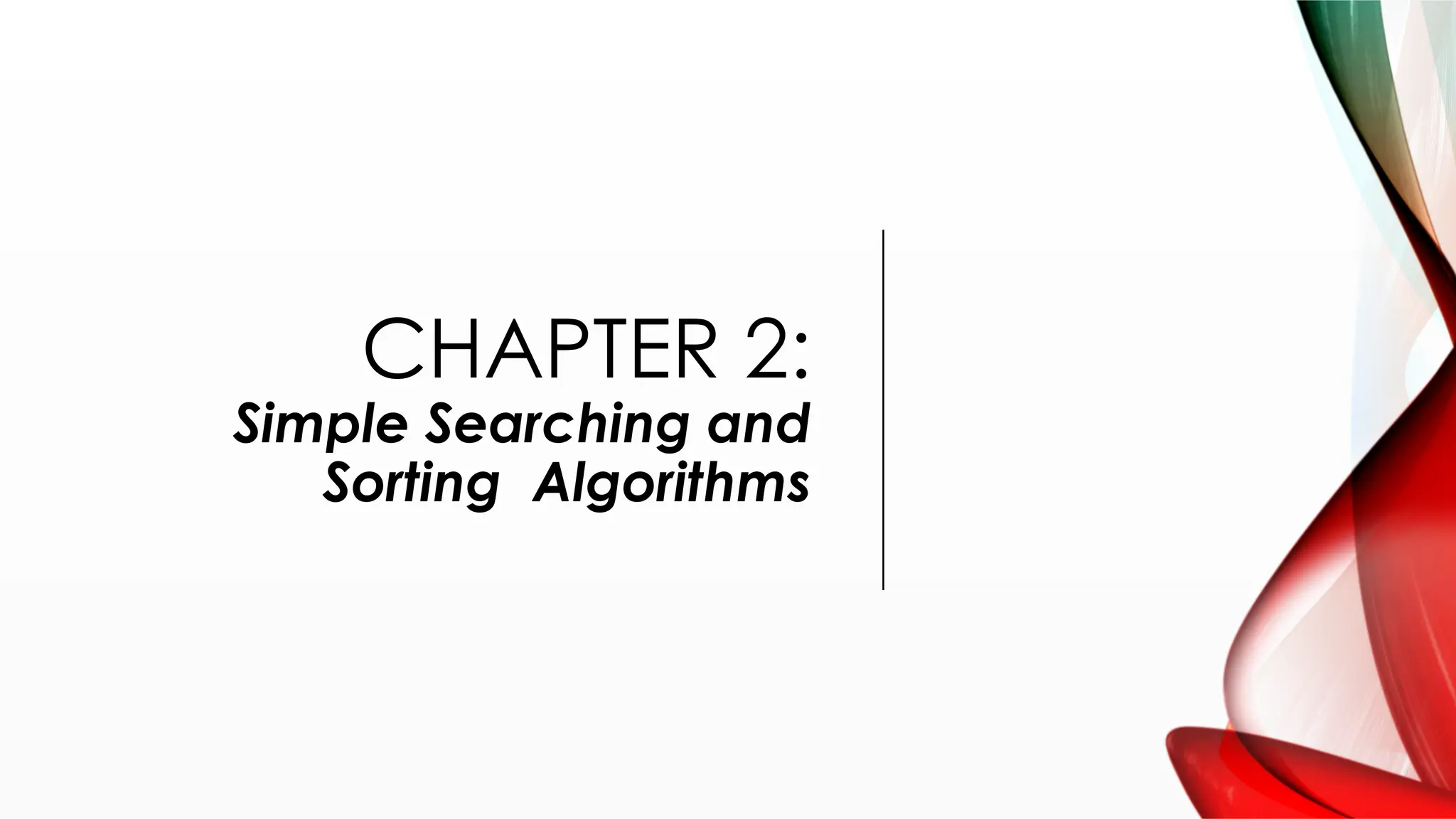
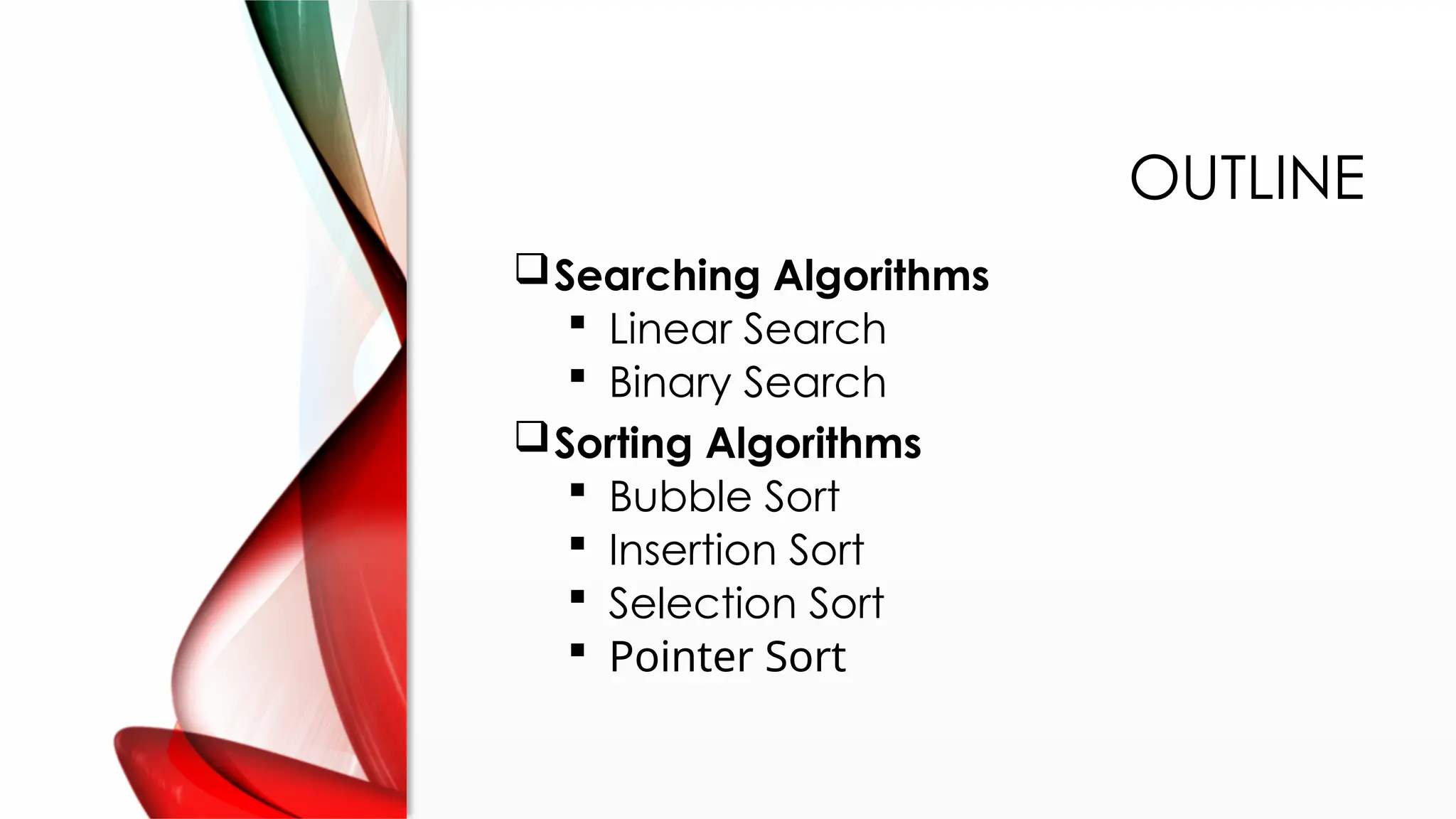
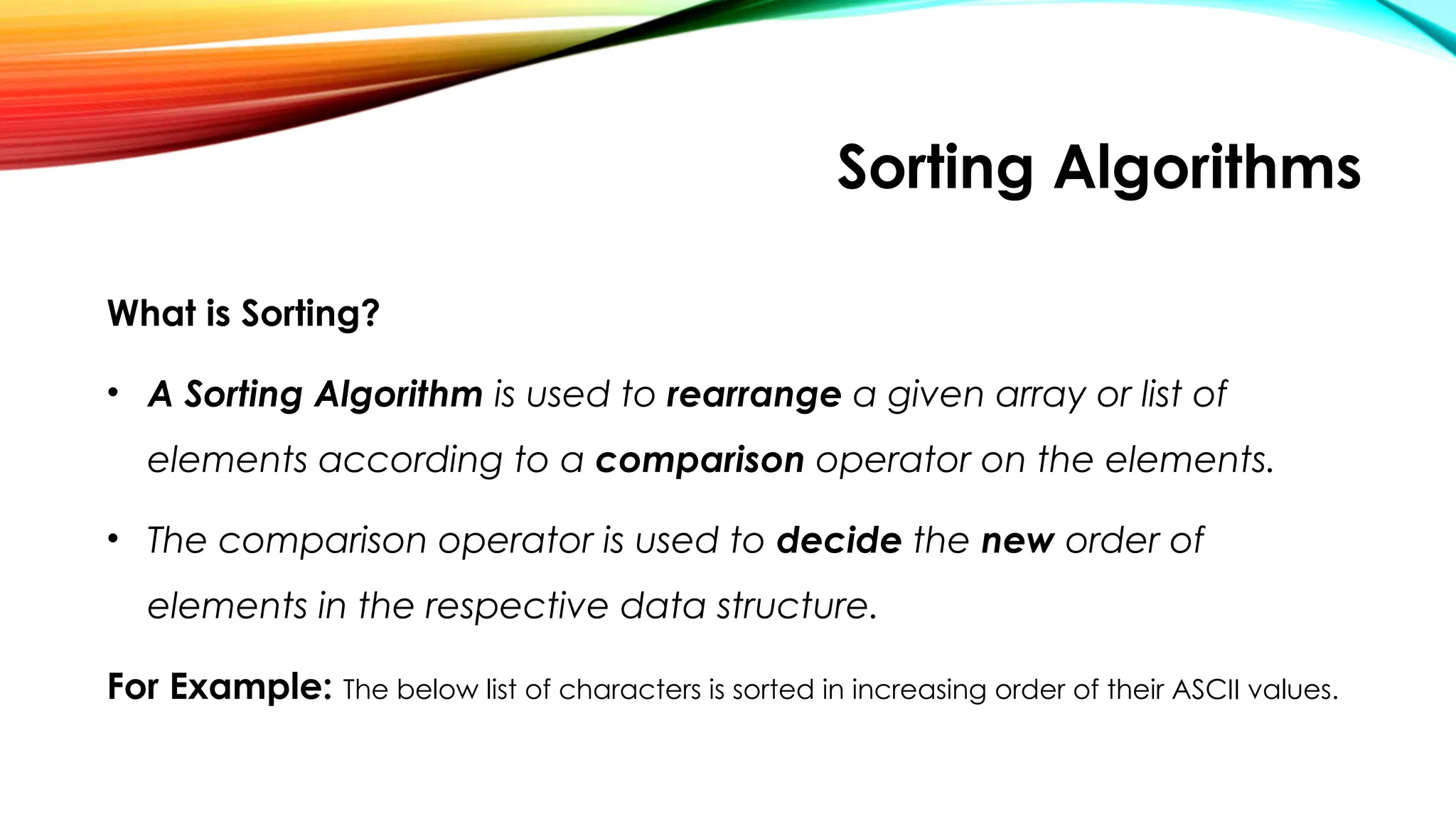
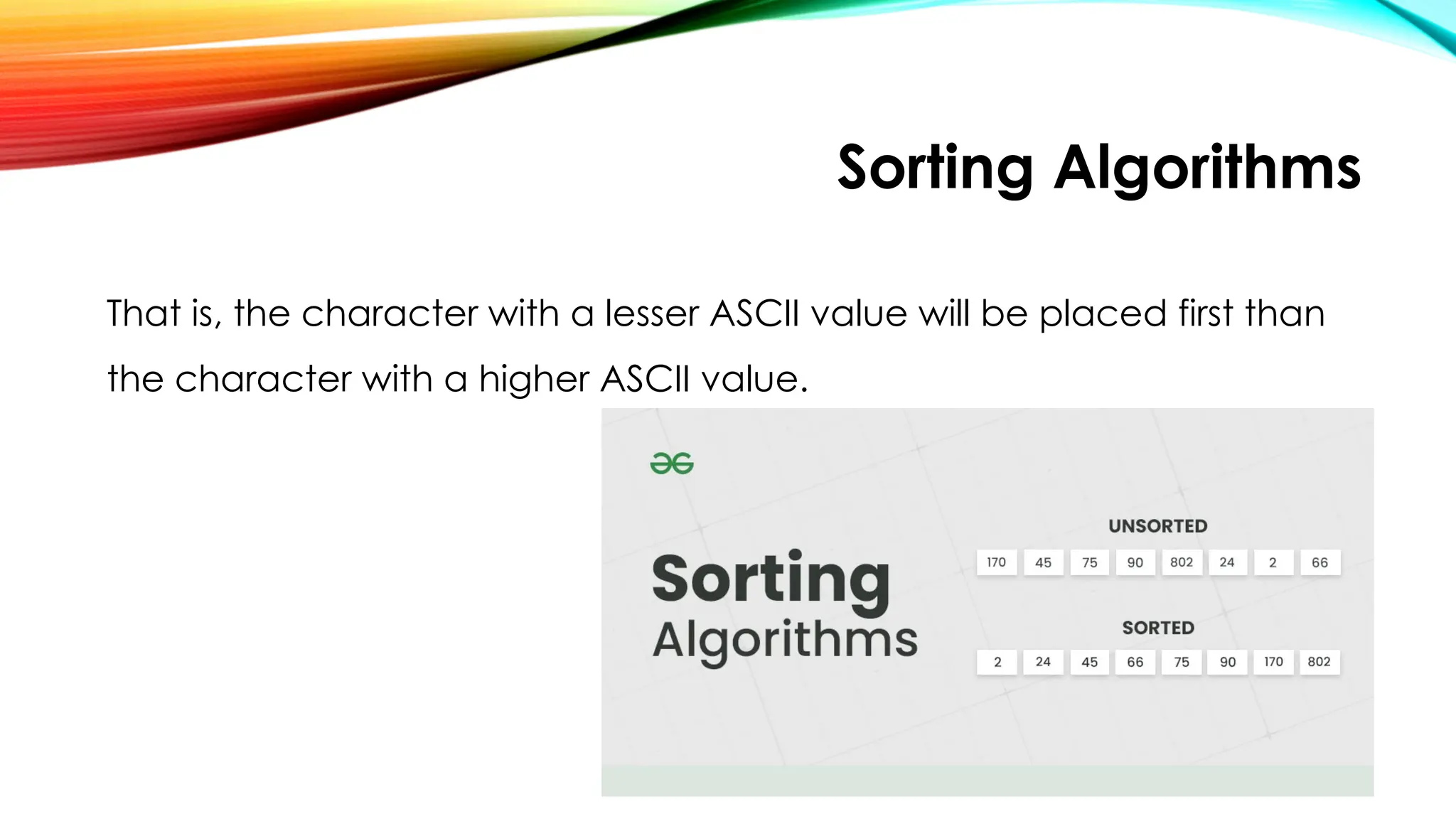
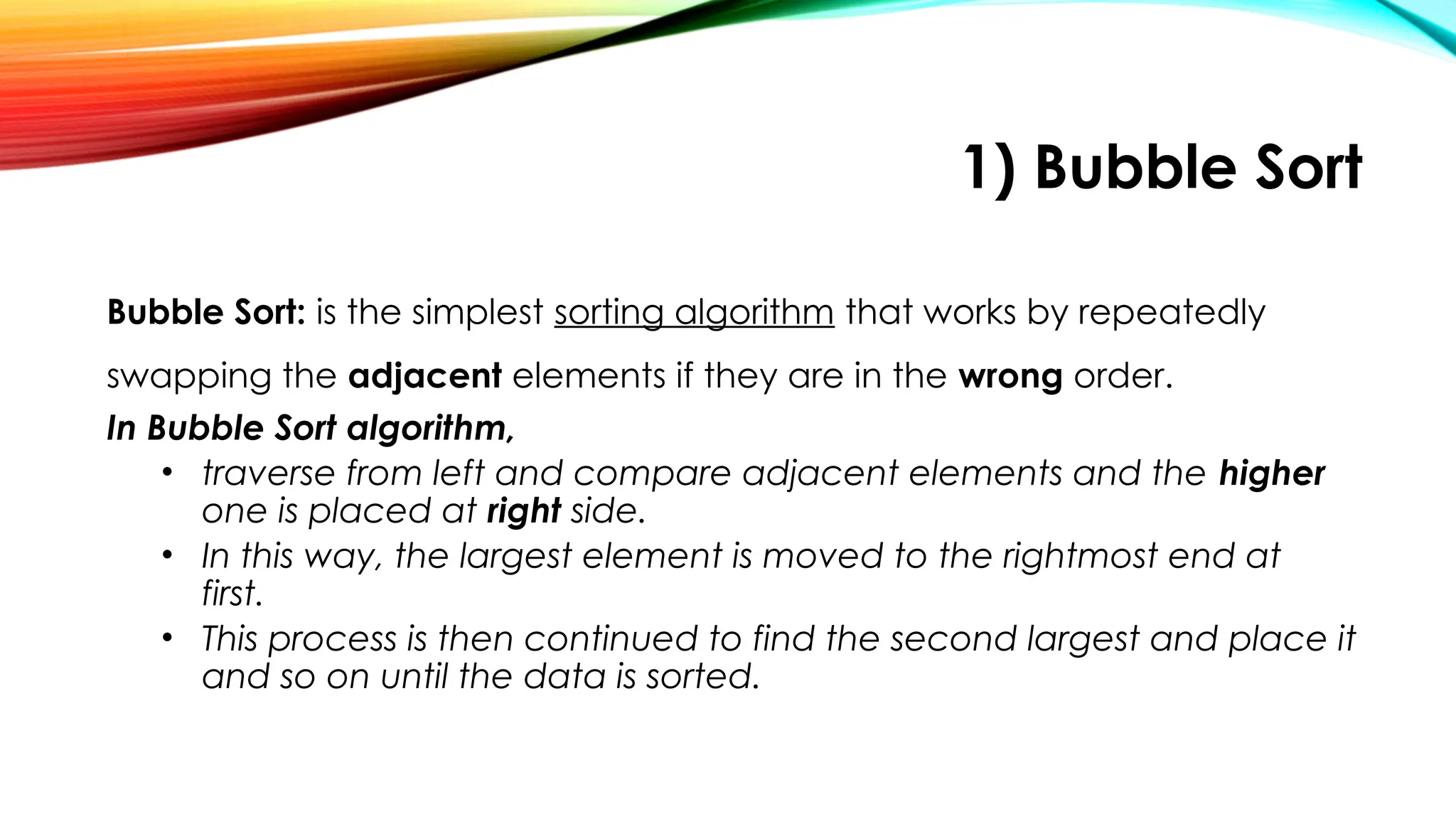
![Bubble Sort
• Consider a list(array): Input: arr[] = {6, 0, 3, 5}
• First Pass:
• The largest element is placed in its correct position, i.e., at
the end of the array.](https://image.slidesharecdn.com/chapter2simplesortingalgorithms1-250922083025-3ba010e8/75/CHAPTER-2-Simple-Sorting-Algorithms-1-pptx-6-2048.jpg)
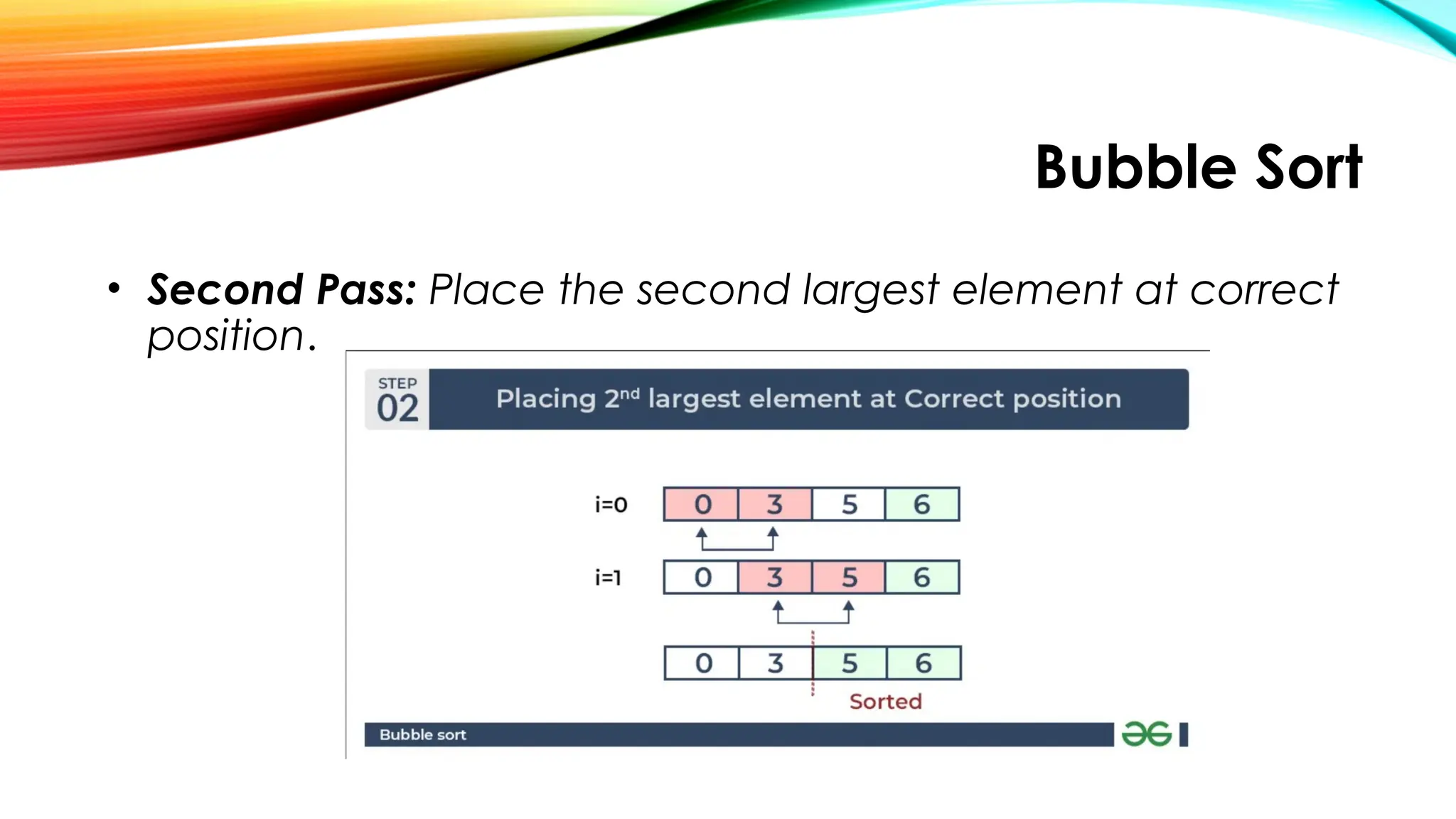
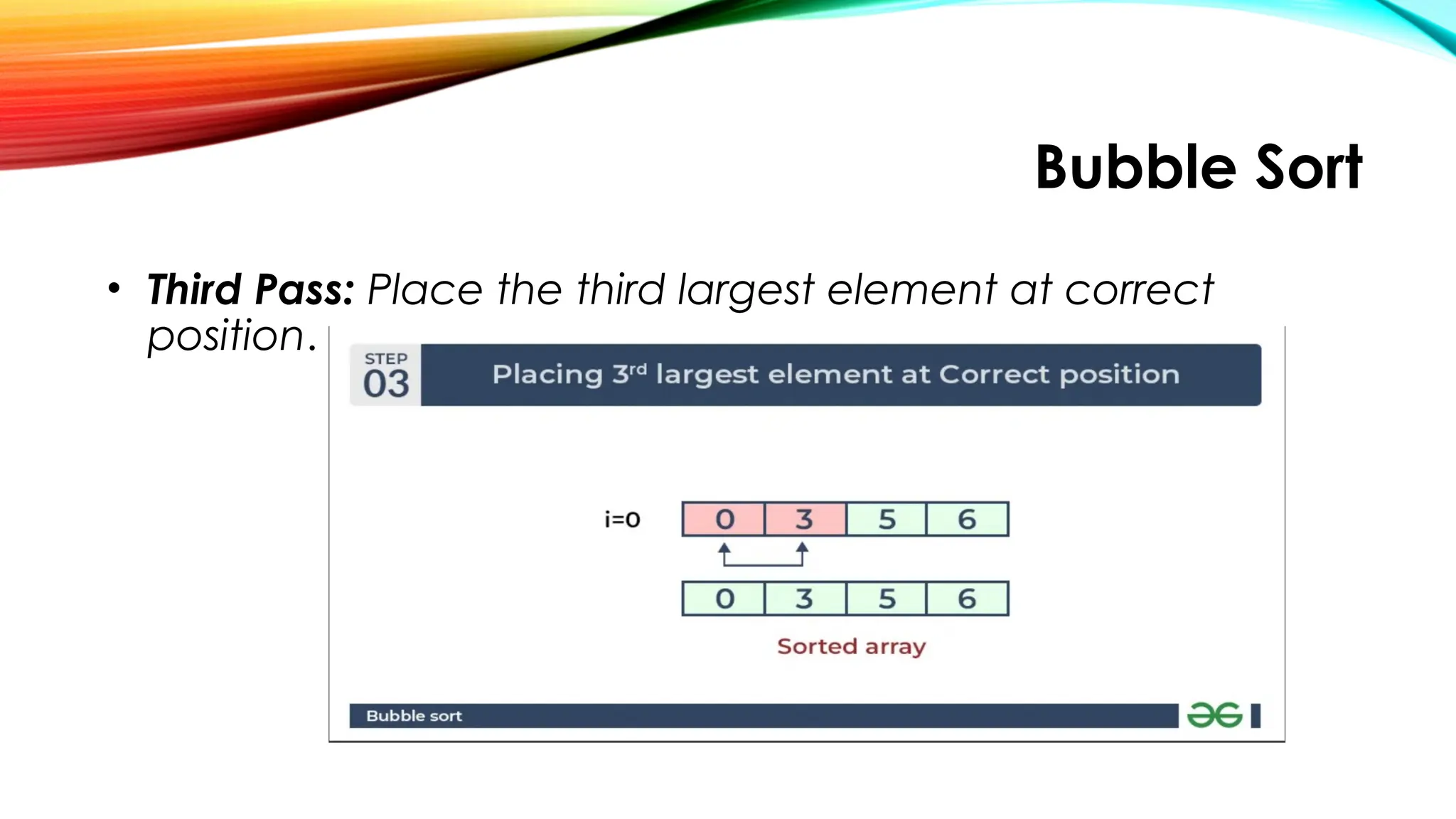
![Bubble Sort
Pseudocode
void bubbleSort(int numbers[], intarray_size){
inti, j, temp;
for (i = (array_size - 1); i>= 0; i--)
for (j = 1; j <= i; j++)
if (numbers[j-1] > numbers[j]){
temp = numbers[j-1];
numbers[j-1] = numbers[j];
numbers[j] = temp;
}
}](https://image.slidesharecdn.com/chapter2simplesortingalgorithms1-250922083025-3ba010e8/75/CHAPTER-2-Simple-Sorting-Algorithms-1-pptx-9-2048.jpg)
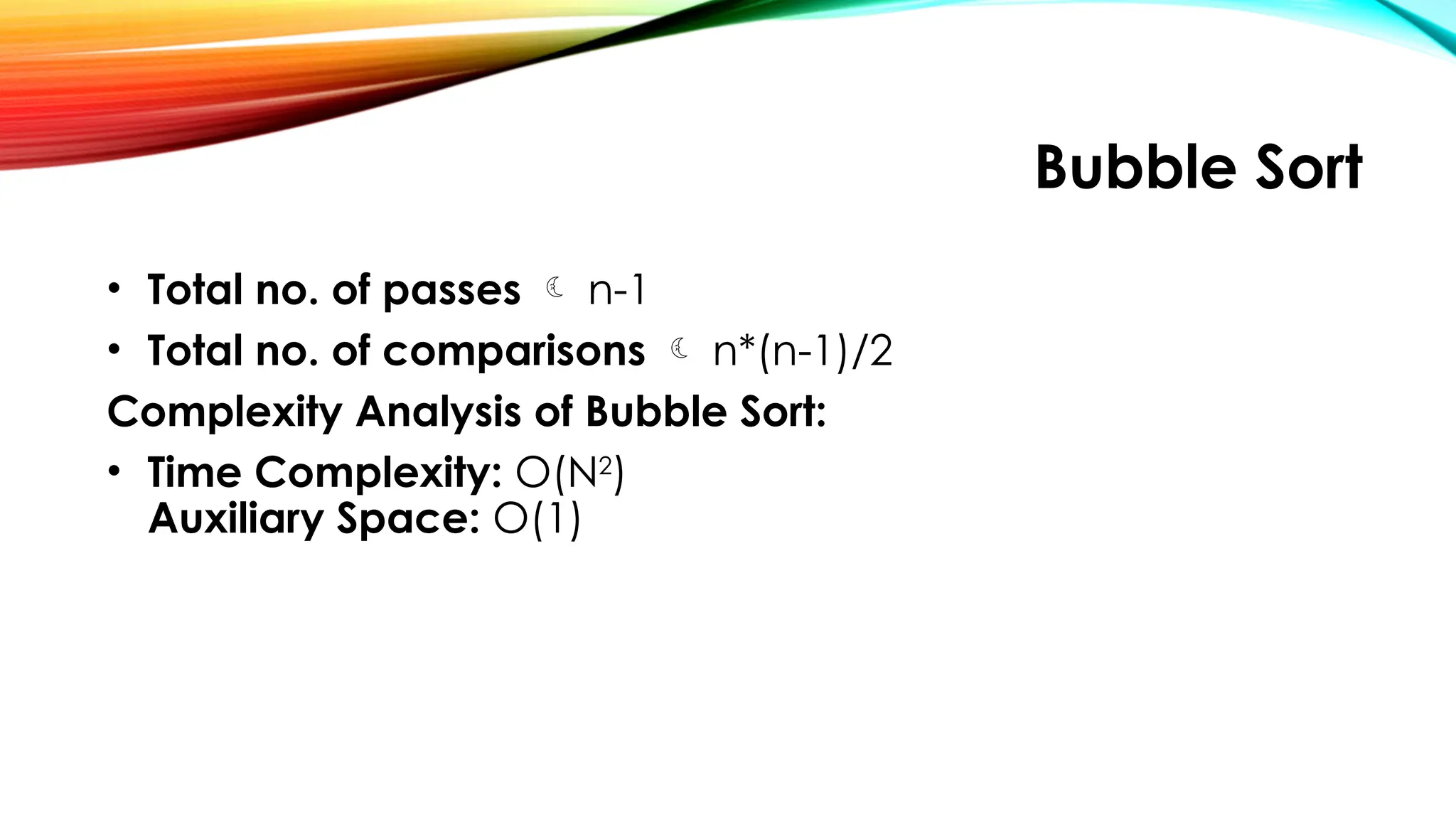
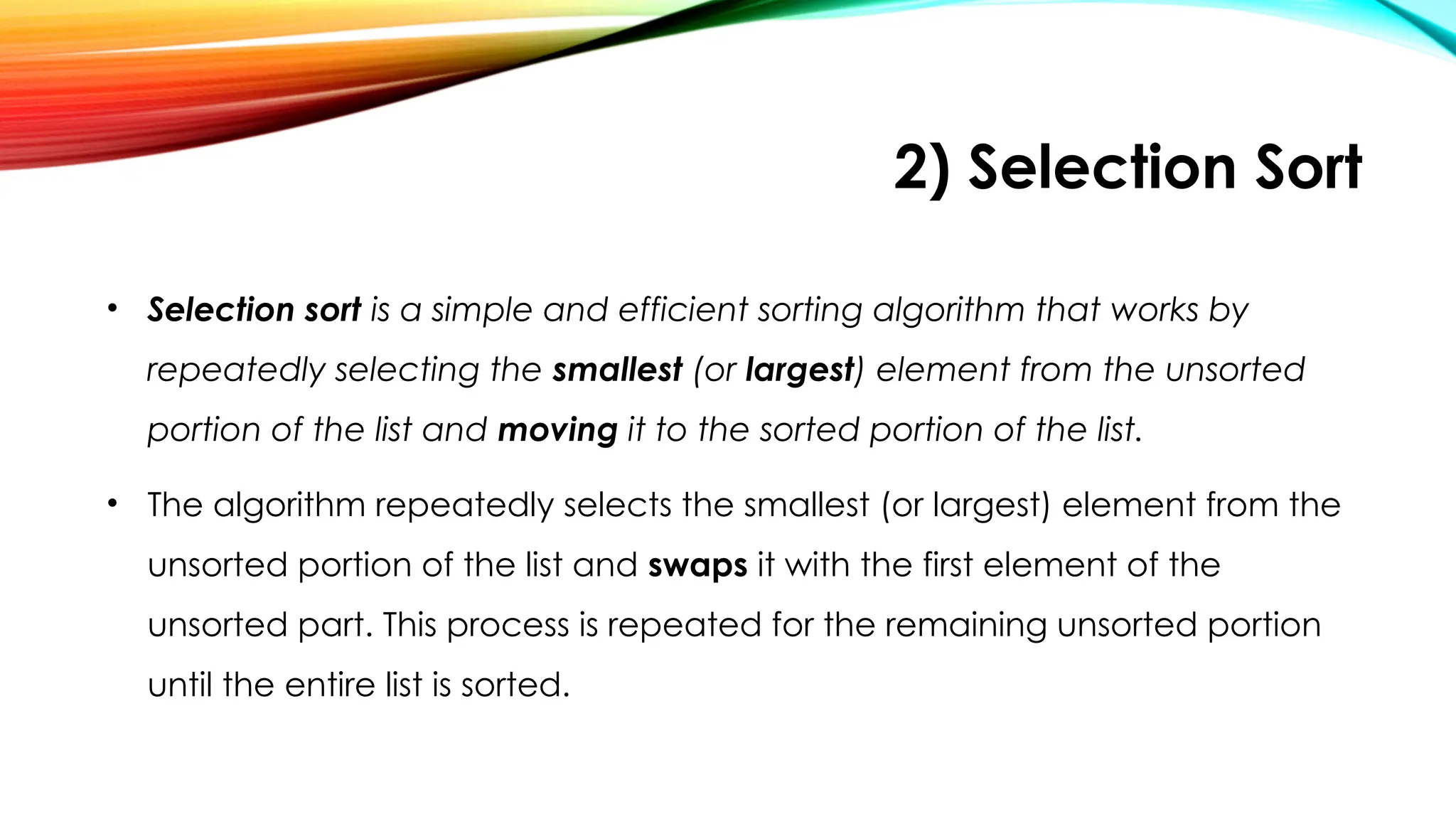
![Selection Sort
Lets consider the following array as an example: arr[] = {64, 25, 12, 22, 11}
First pass:
• For the first position in the sorted array, the whole array is traversed
from index 0 to 4 sequentially. The first position where 64 is stored
presently, after traversing whole array it is clear that 11 is the lowest
value.
• Thus, replace 64 with 11. After one iteration 11, which happens to be
the least value in the array, tends to appear in the first position of the
sorted list.](https://image.slidesharecdn.com/chapter2simplesortingalgorithms1-250922083025-3ba010e8/75/CHAPTER-2-Simple-Sorting-Algorithms-1-pptx-12-2048.jpg)
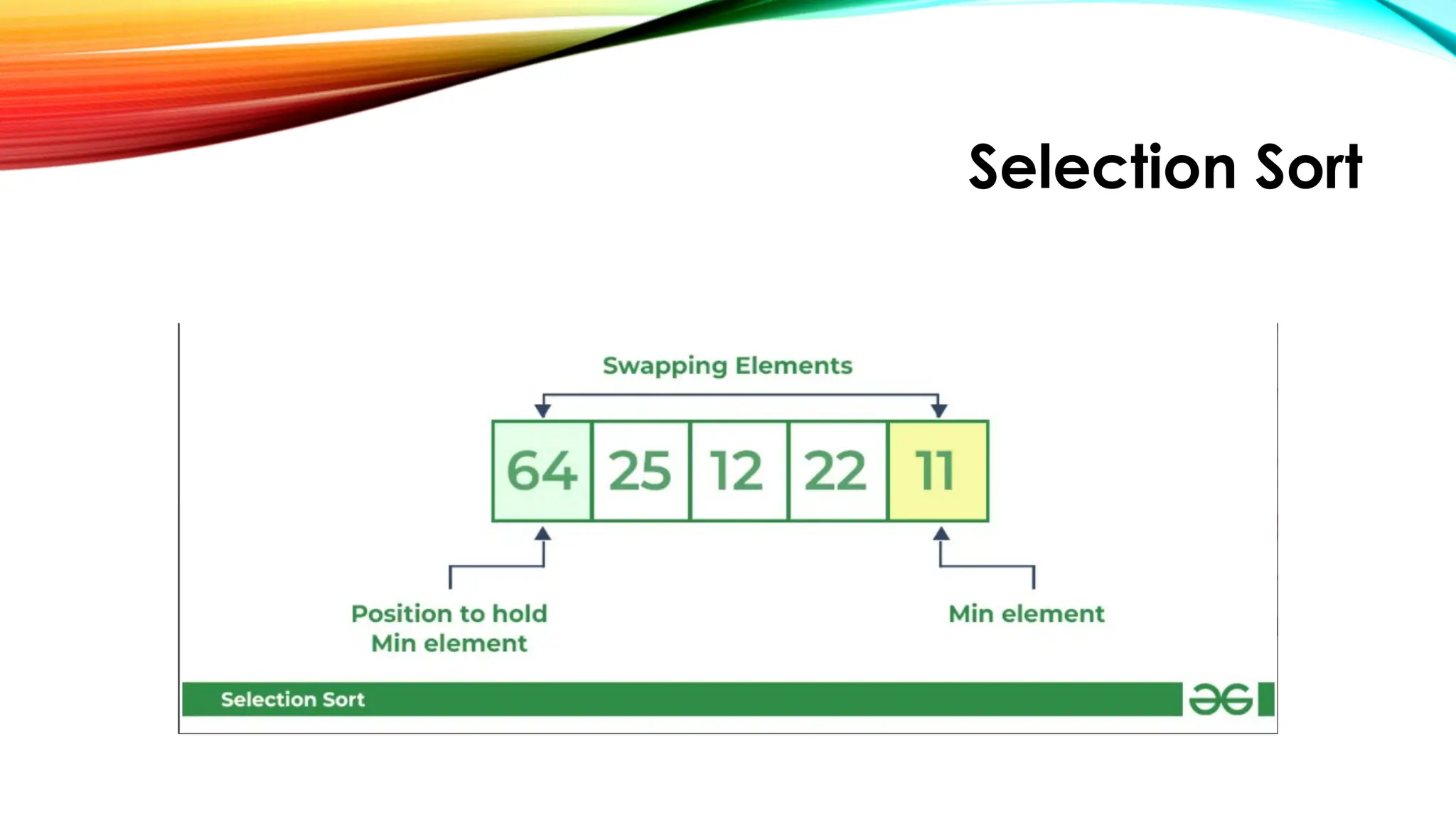
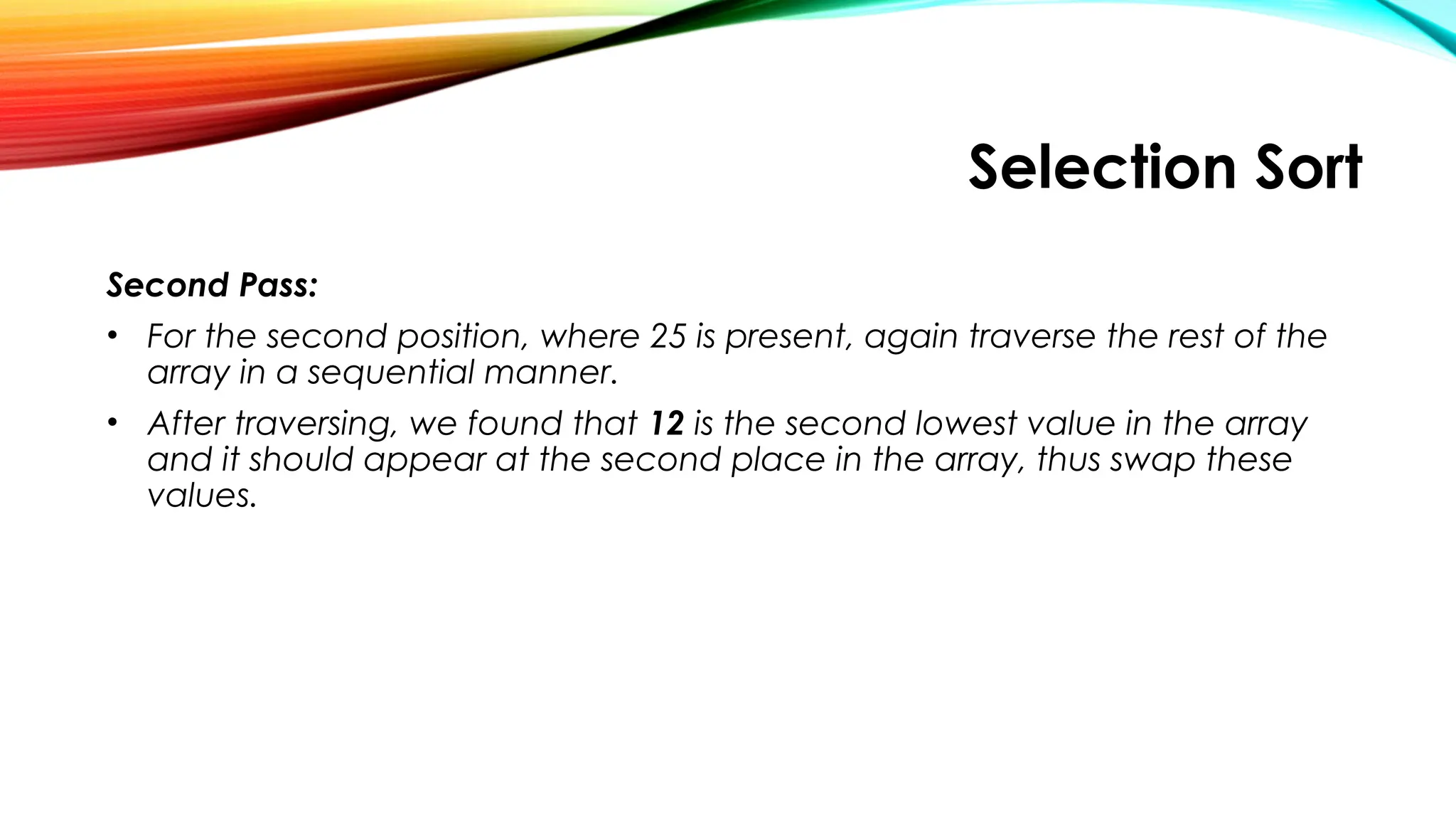
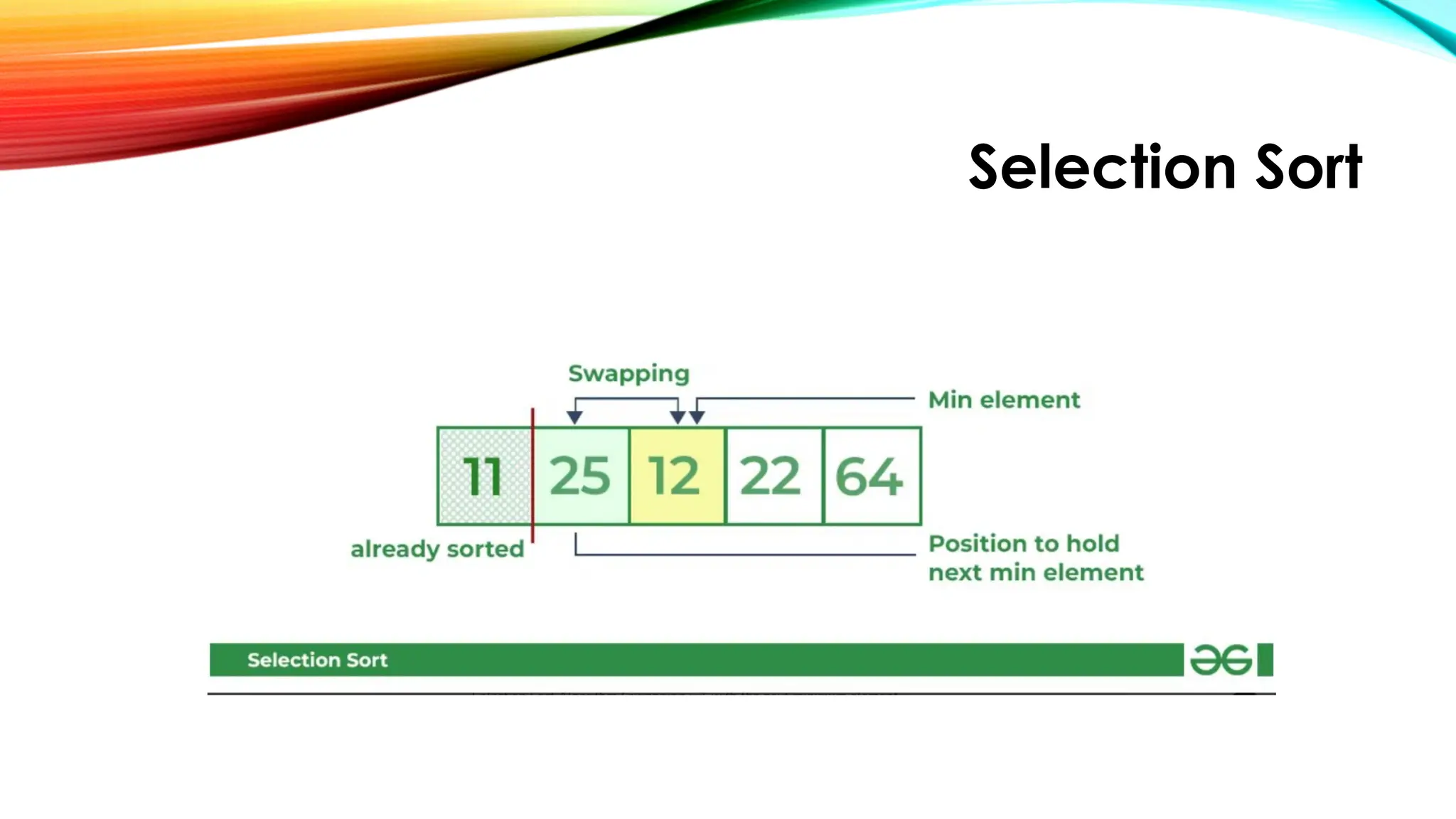
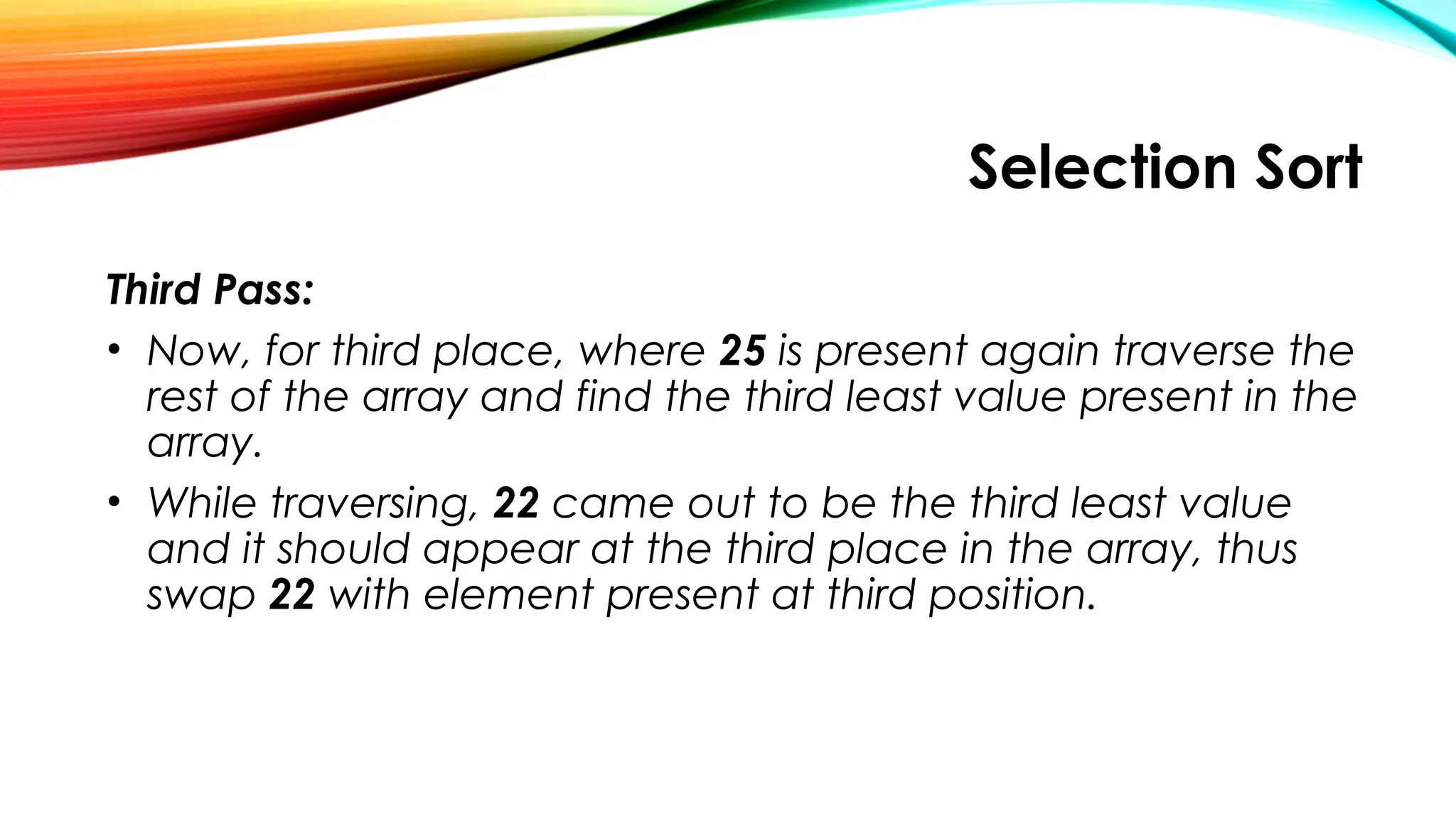
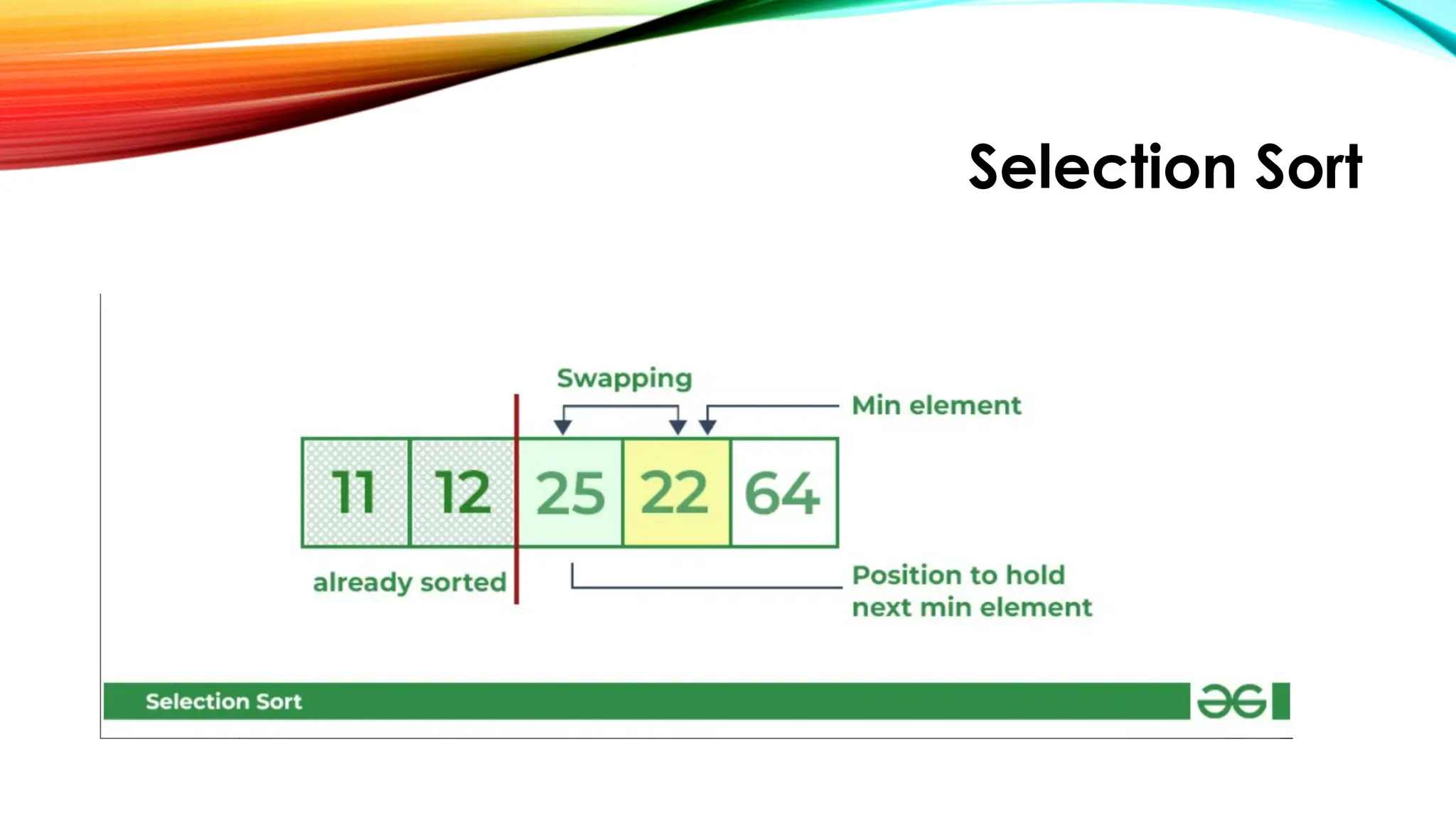
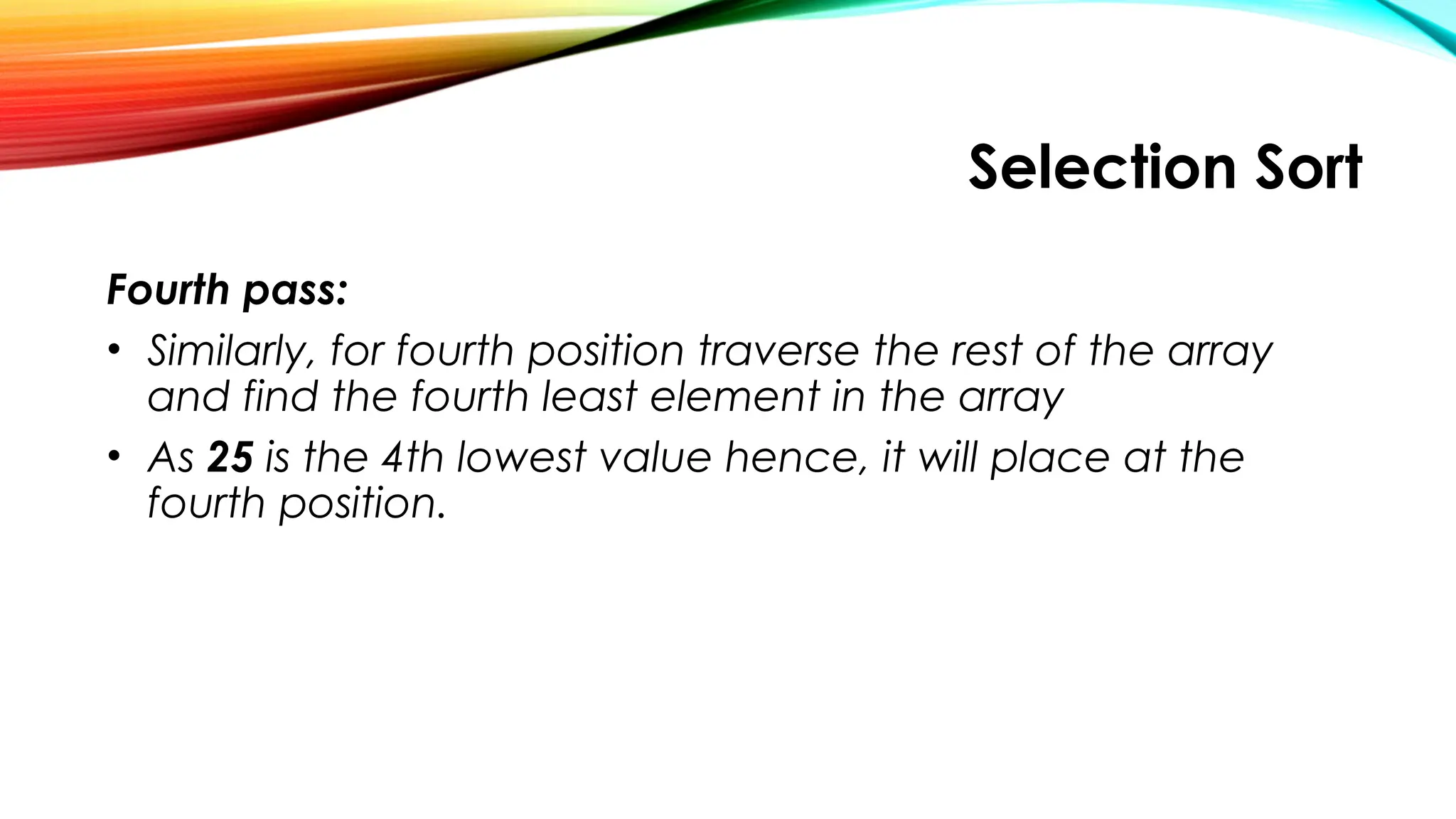
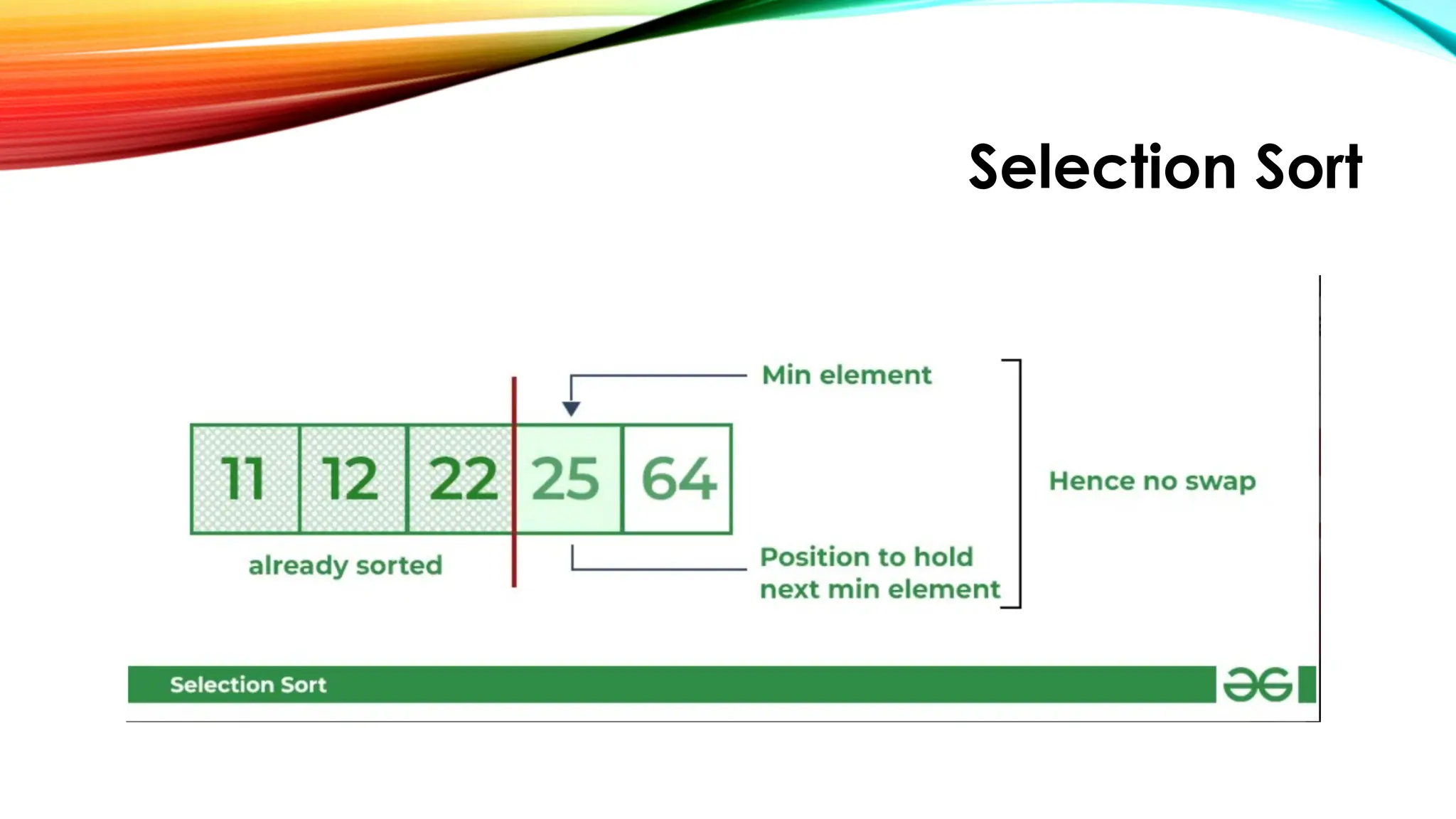
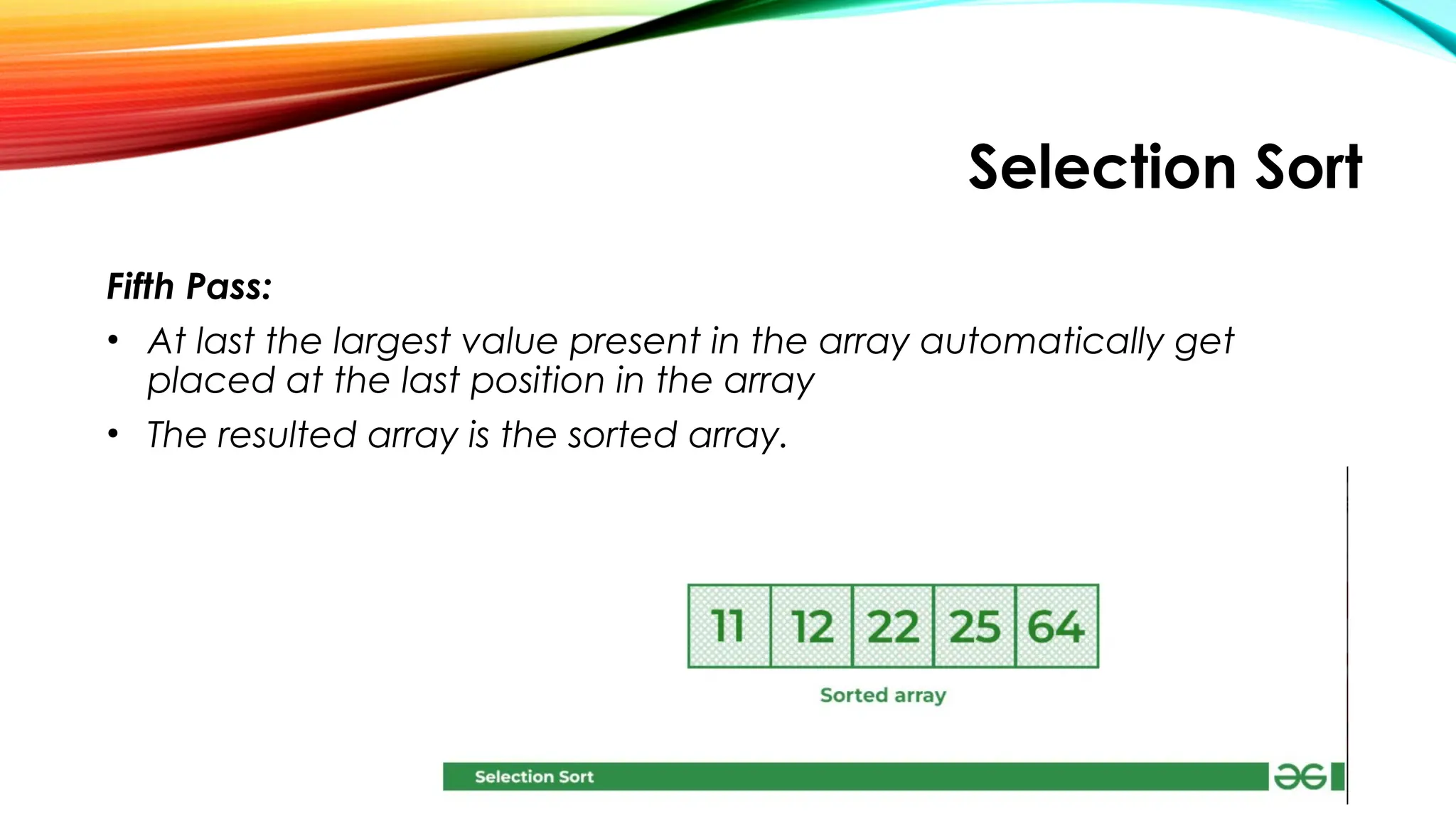
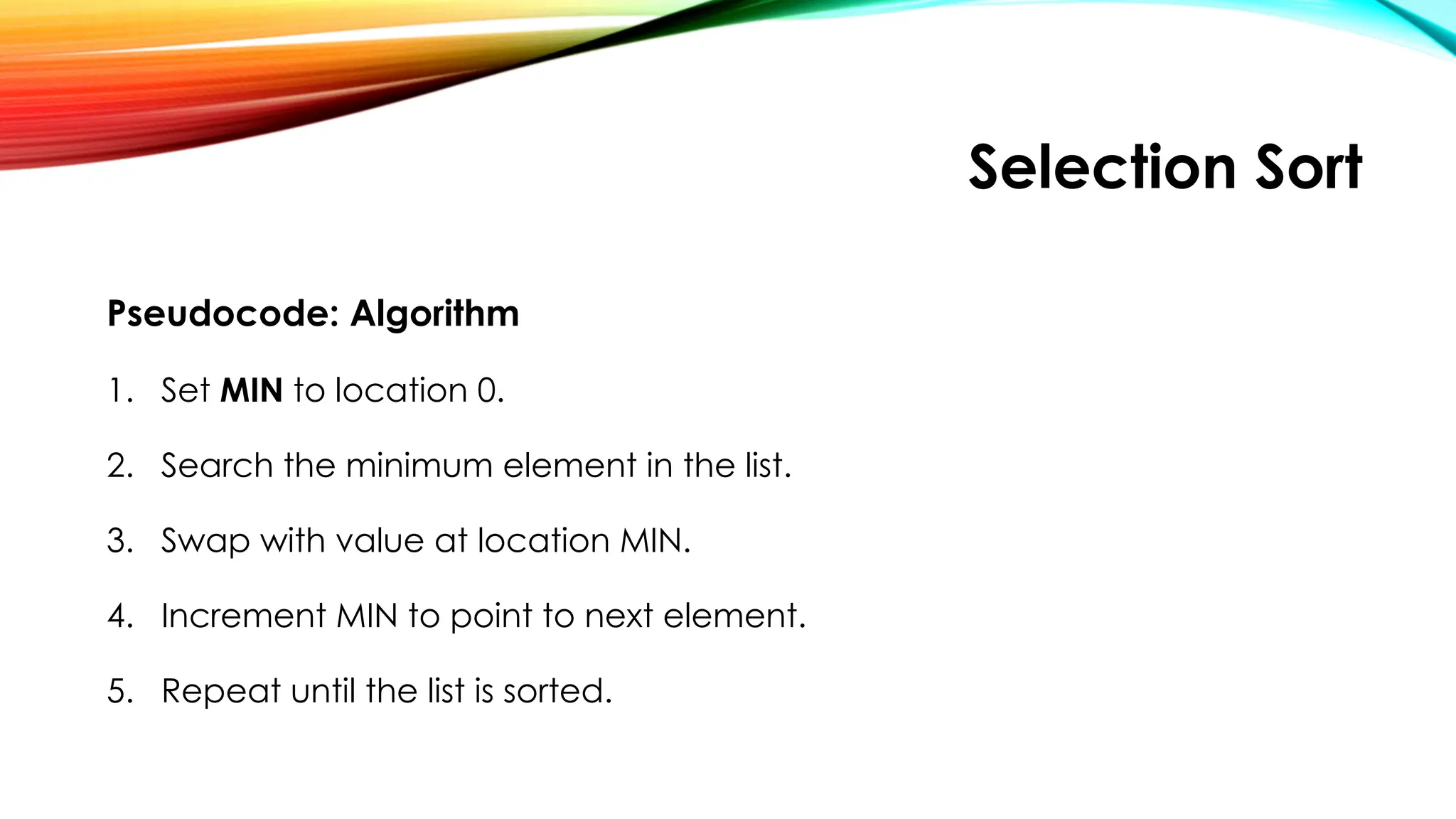
![Selection Sort
Pseudocode: Algorithm Selection-Sort (A)
for( i = 0; i < n-1; i++)
min = i;
for (j = i + 1; j < n; j++)
if A[j] < A[min])
min = j;
if(min != i)
swap(A[i], A[min]);](https://image.slidesharecdn.com/chapter2simplesortingalgorithms1-250922083025-3ba010e8/75/CHAPTER-2-Simple-Sorting-Algorithms-1-pptx-22-2048.jpg)
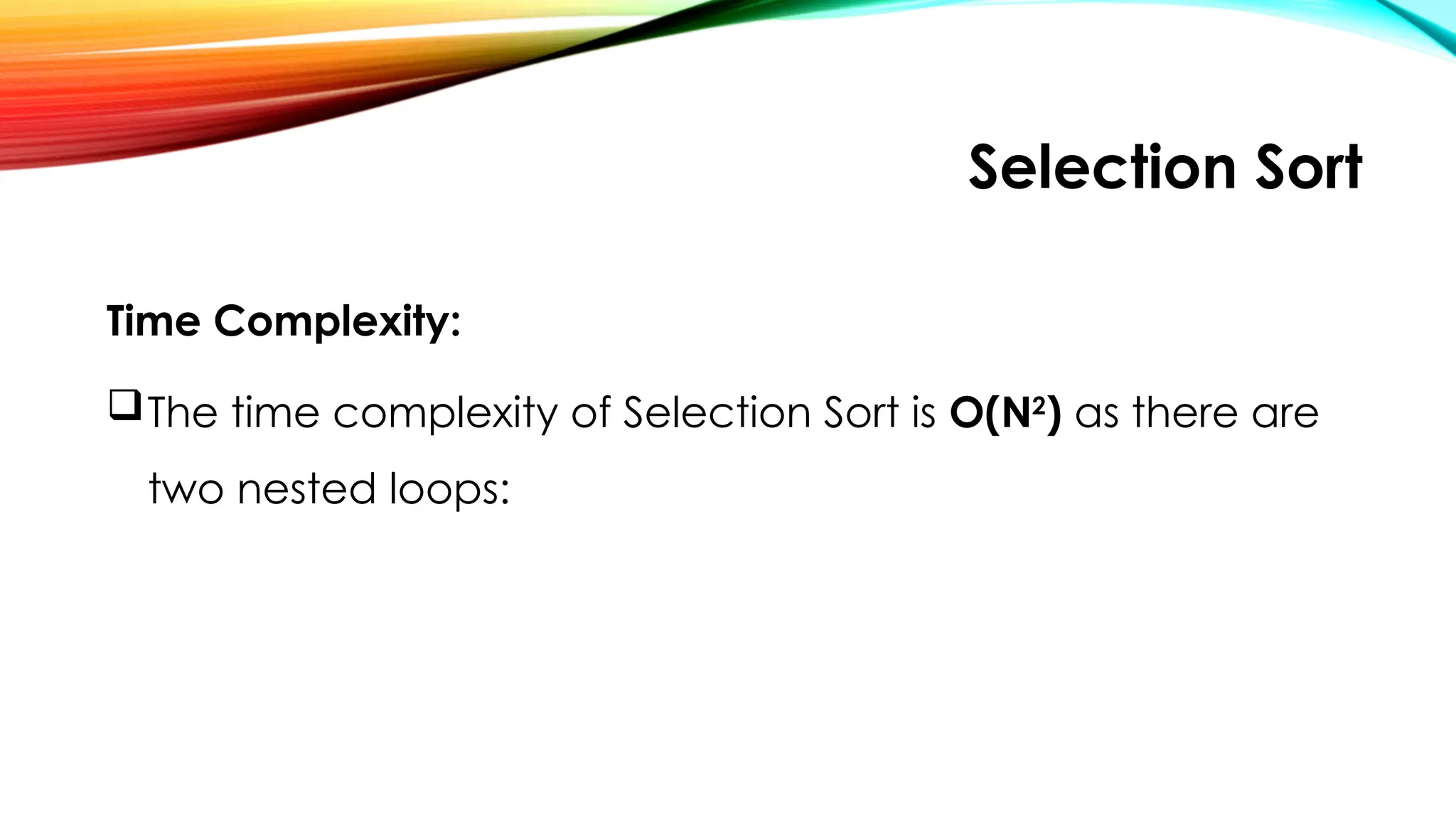
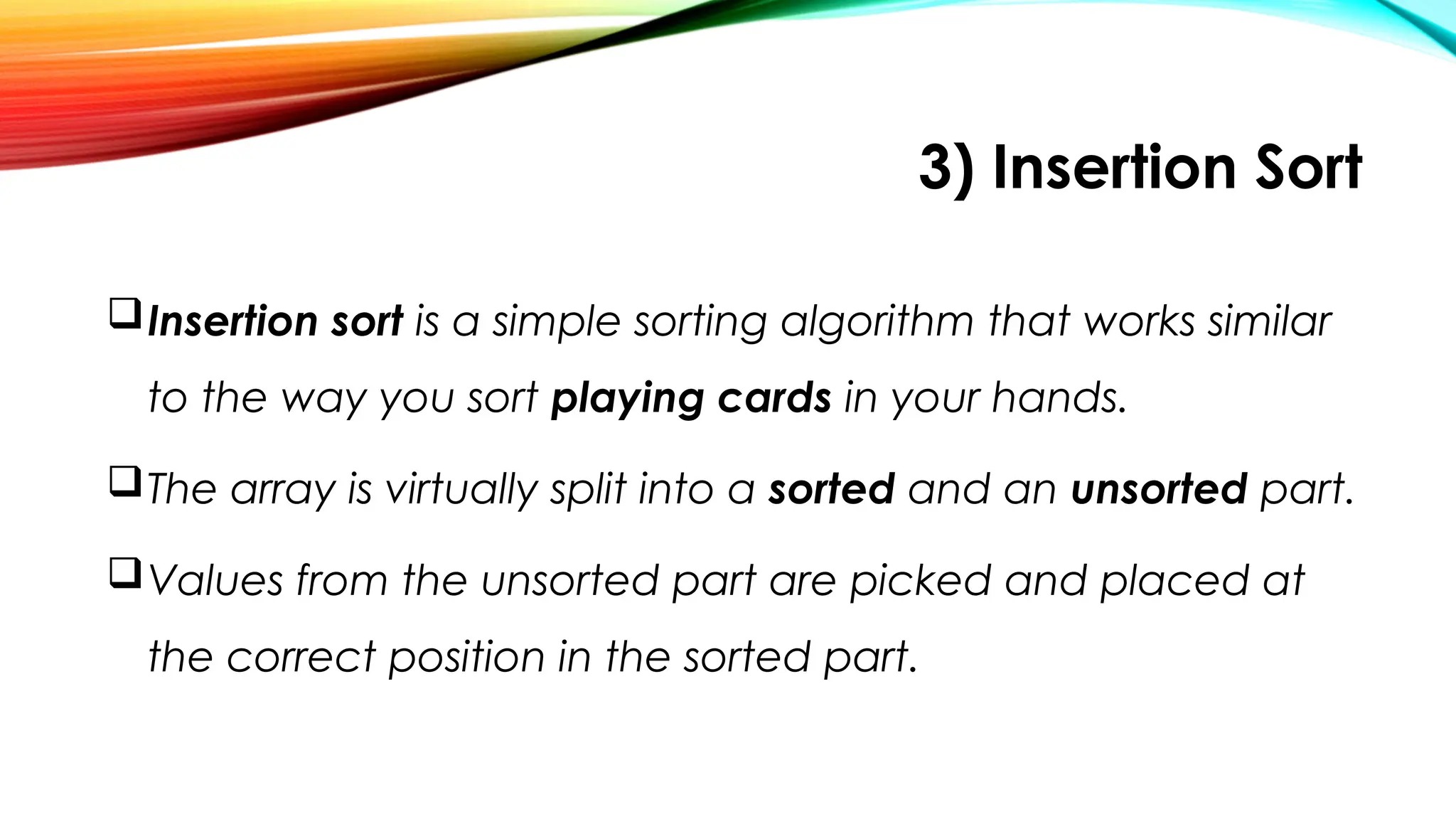
![Insertion Sort
• Working of Insertion Sort algorithm:
• Consider an example: arr[]: {12, 11, 13, 5, 6}
First Pass:
Initially, the first two elements of the array are compared in insertion
sort.
12 11 13 5 6
12 11 13 5 6](https://image.slidesharecdn.com/chapter2simplesortingalgorithms1-250922083025-3ba010e8/75/CHAPTER-2-Simple-Sorting-Algorithms-1-pptx-25-2048.jpg)
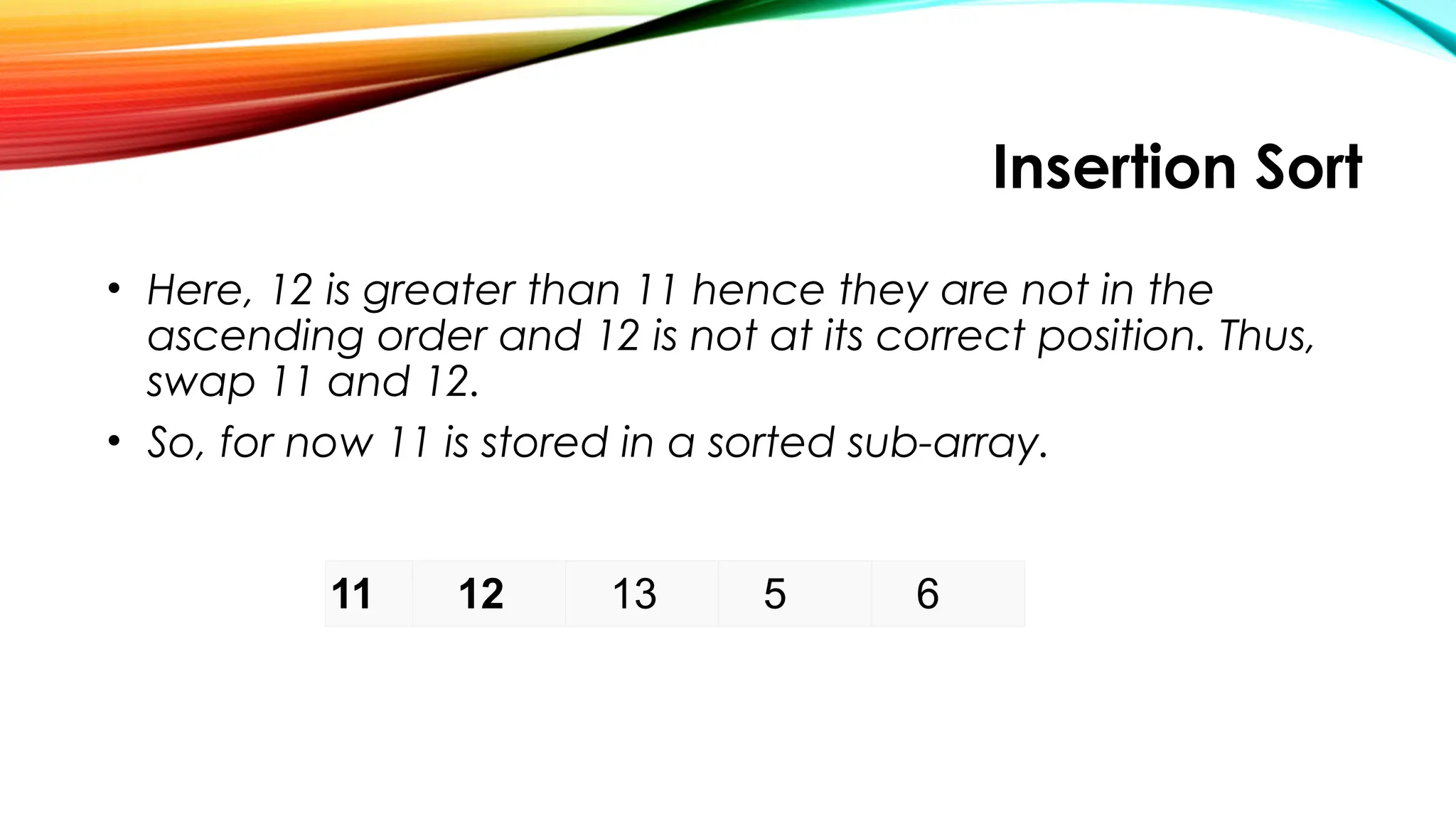
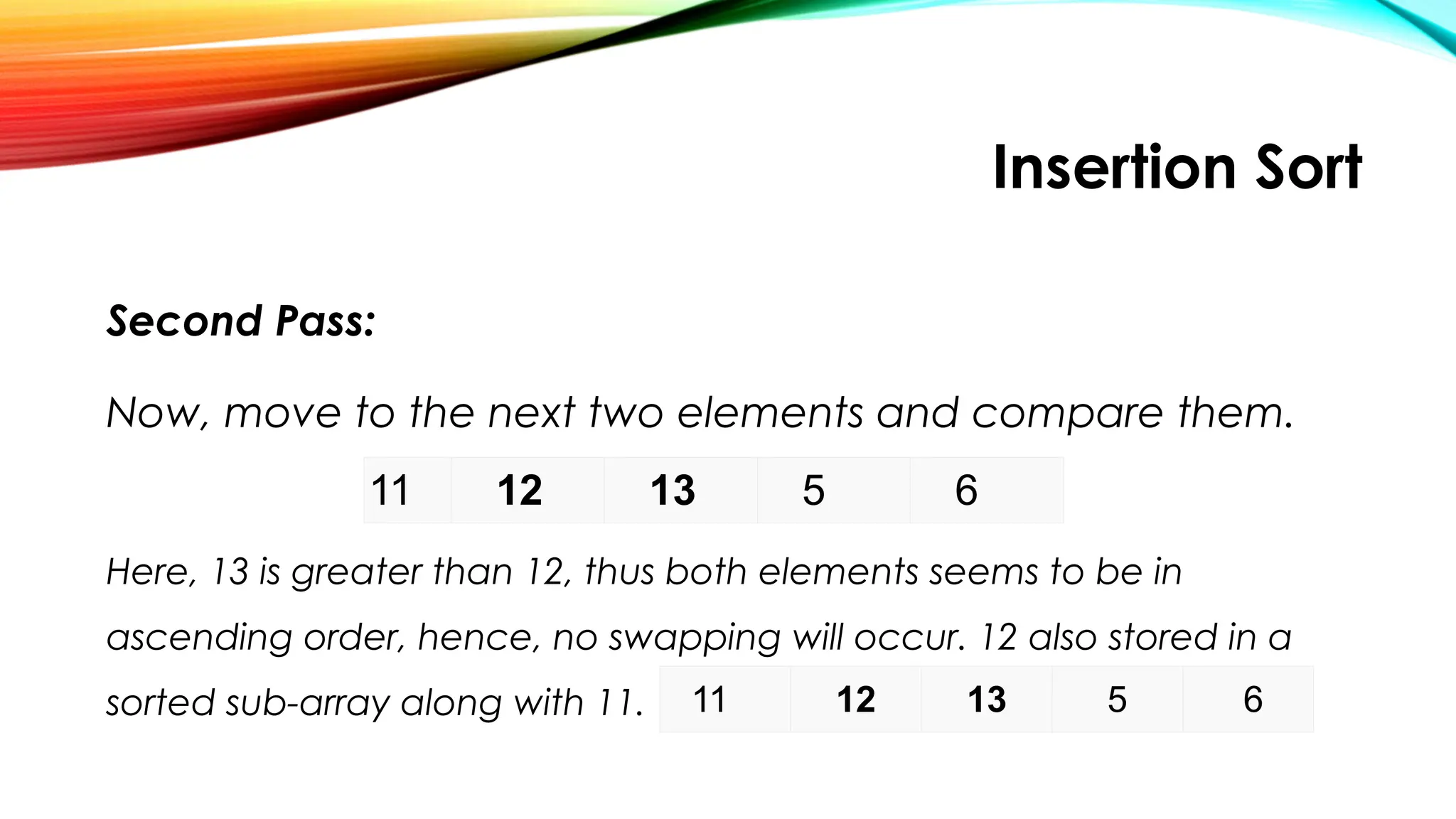
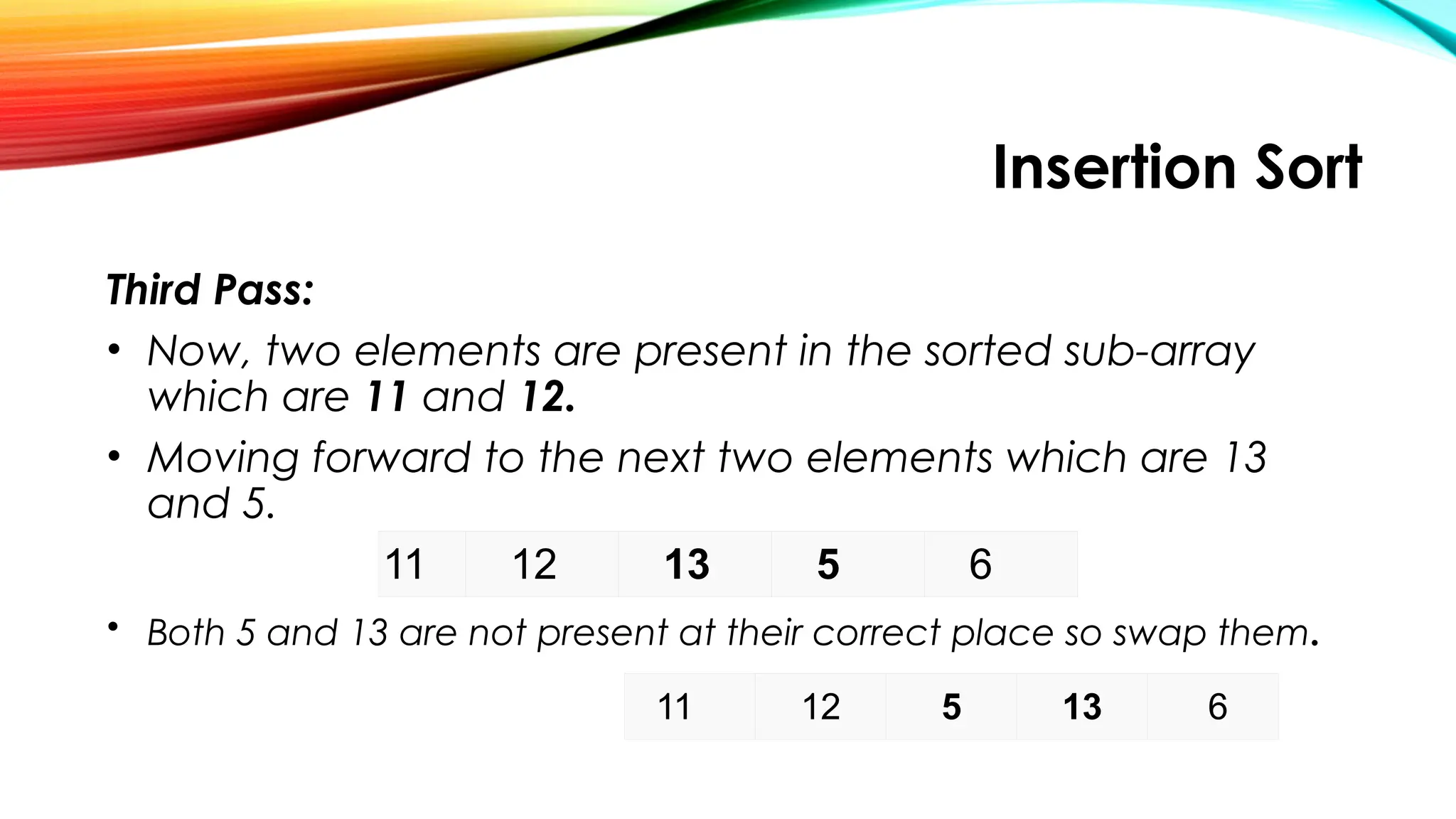
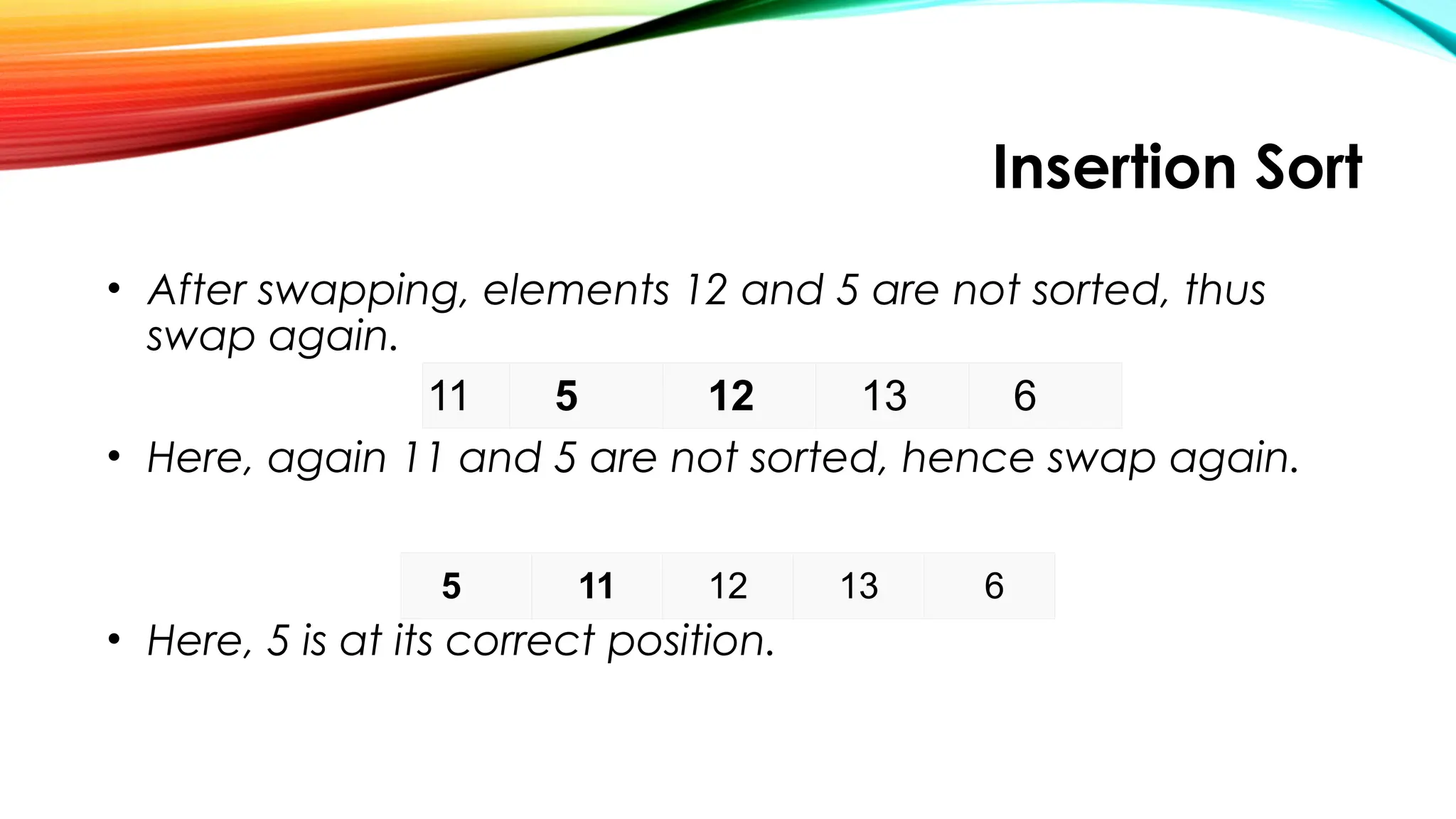
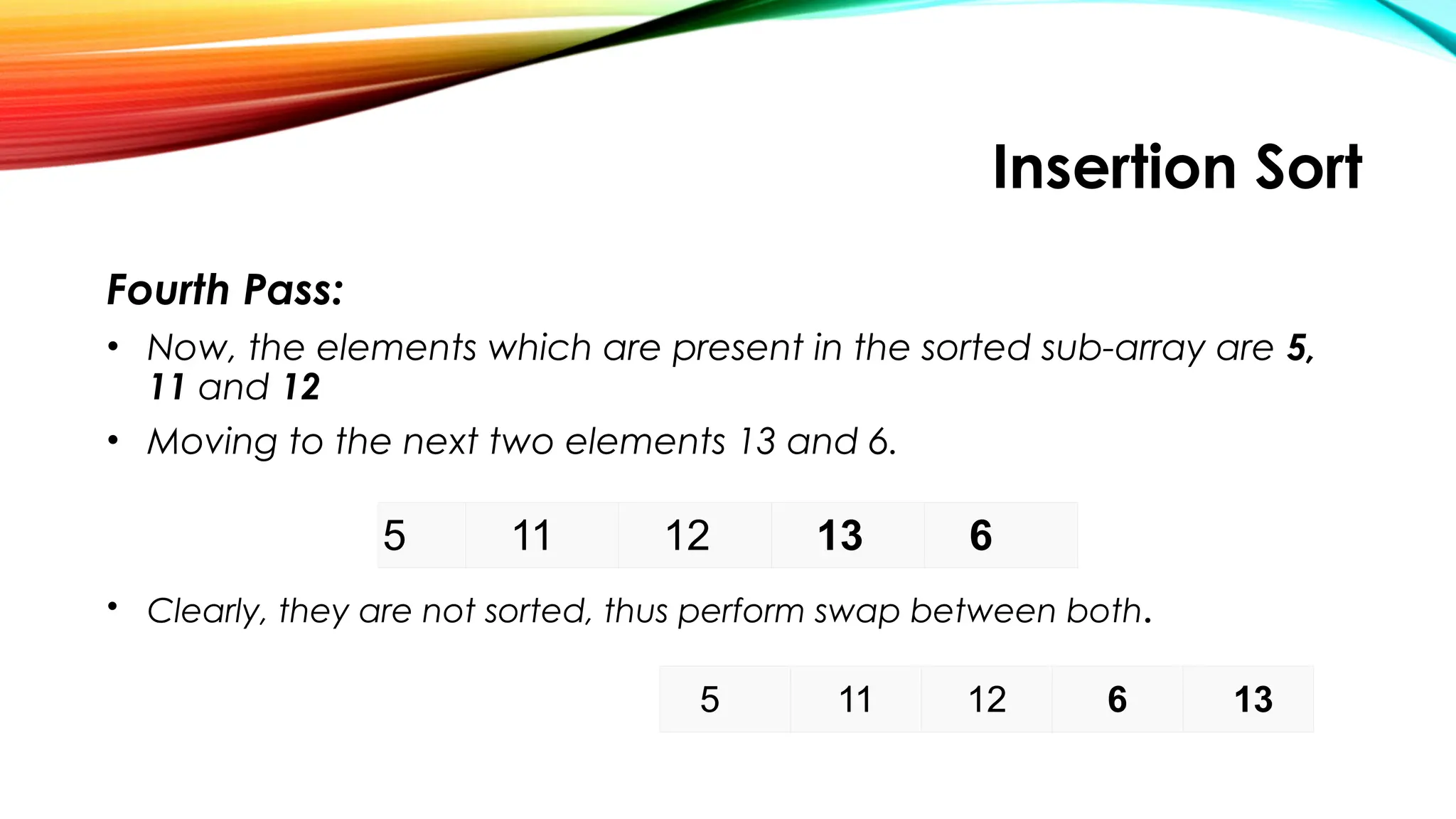
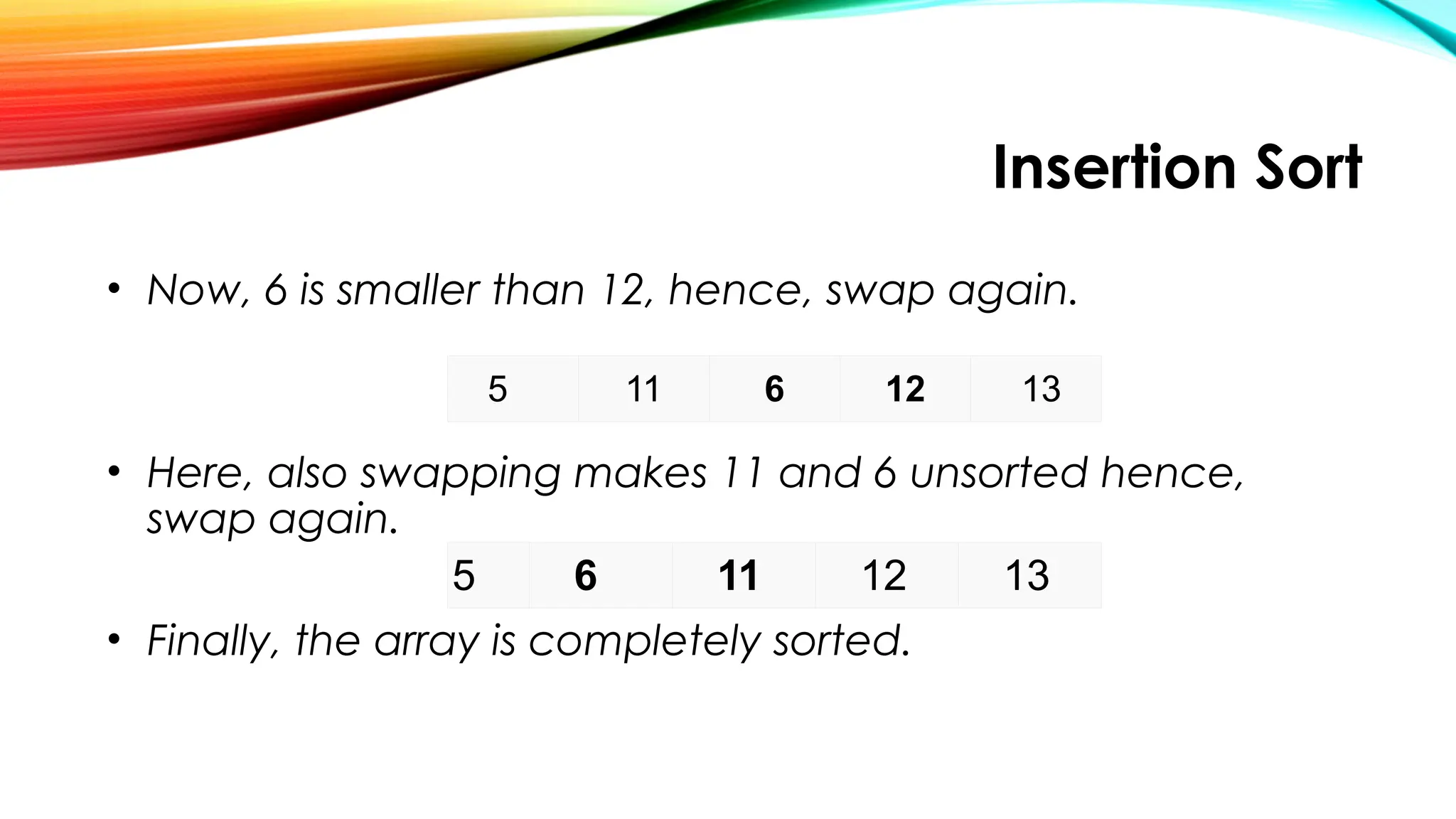
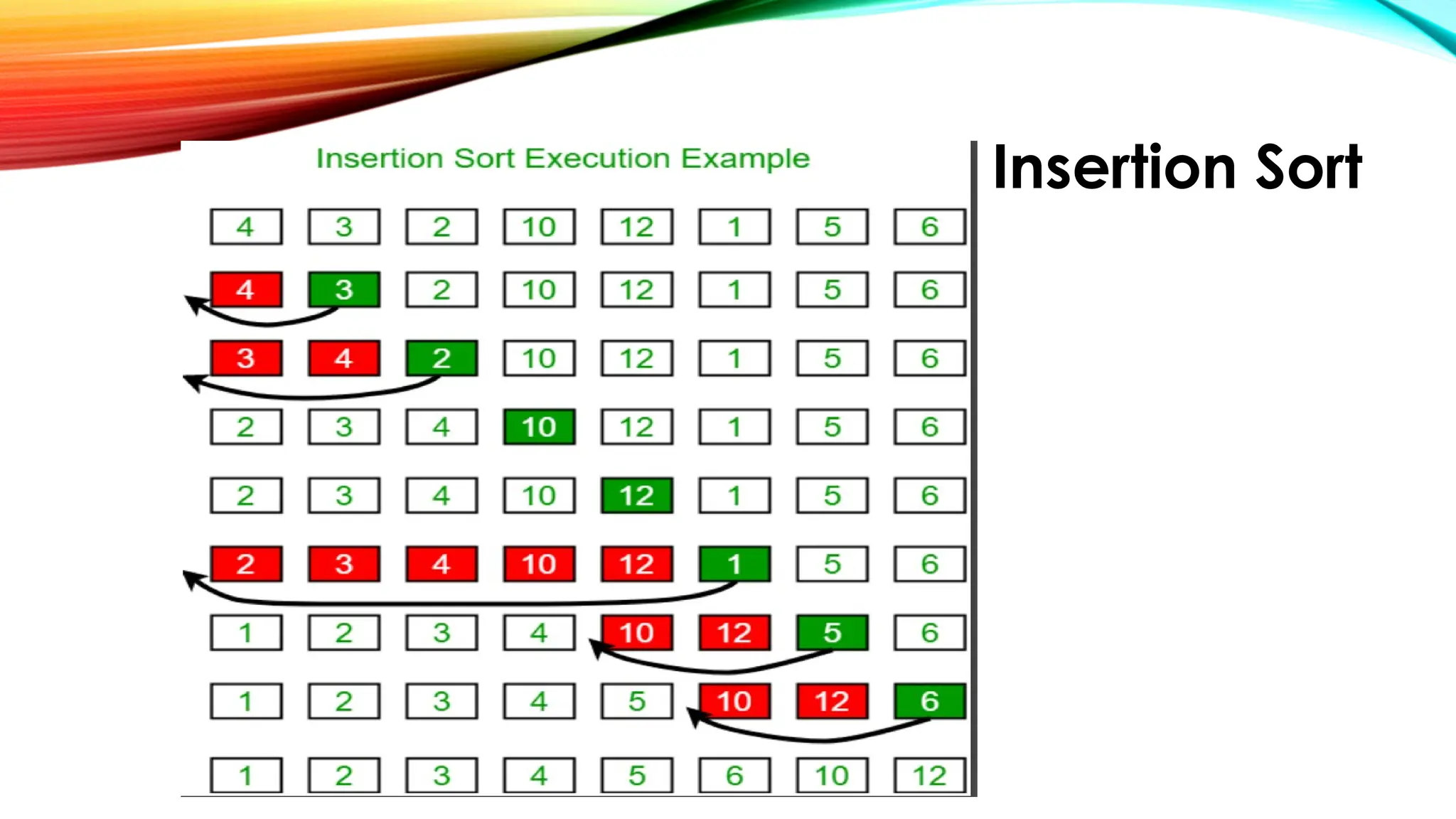
![Insertion Sort
Pseudocode:
for i = 1 to length(A)-1:
j= i;
While j>0 and A[j-1] >A[j]
swap A[ j ] and A[ j-1]
j = j-1](https://image.slidesharecdn.com/chapter2simplesortingalgorithms1-250922083025-3ba010e8/75/CHAPTER-2-Simple-Sorting-Algorithms-1-pptx-33-2048.jpg)
